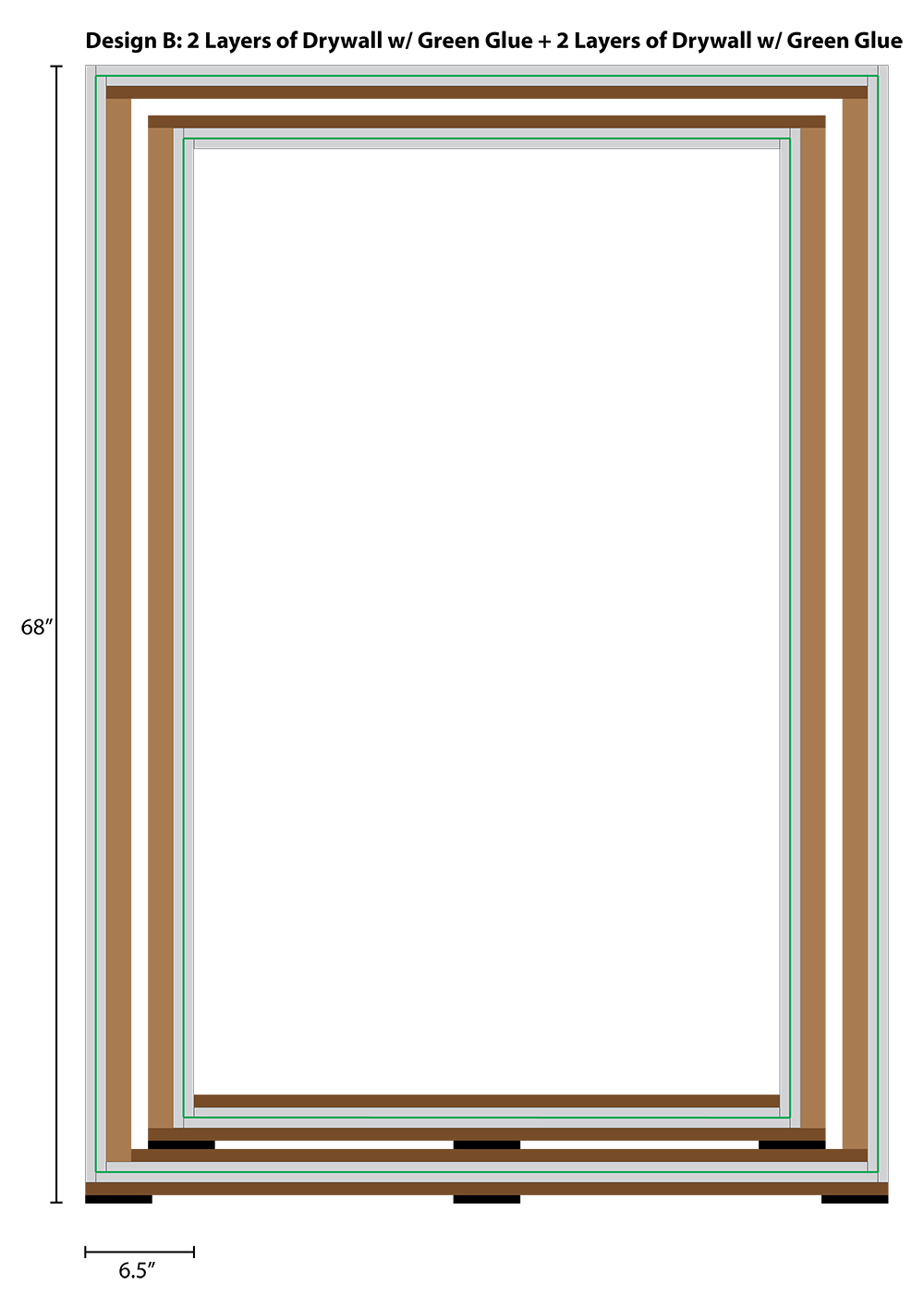I am going to build a sound-booth, 100% for recording spoken-word vocals. My biggest concern is sound isolation from exterior noise. I live near many major source of public transportation and they all make considerable noise. I am dealing with the following:
- I am 5 miles away (as the crow flies) from the world's 4th busiest airport, and am directly under a runway flight-path. That means planes are directly over-head all day long. The planes are usually of the 737 variety with a big 777 or 747 a few times per day. (I can take a break when a mega plane goes by, but I don't want to hear the 737s.)
- I am one city-block away from two major commuter train lines serving a mega American city. They make some noise, but not as much as the planes.
- I am half a city-block away from a major interstate. I only really hear it at night because day-time traffic keeps trucks from going too fast and making too much noise.
- There is some street noise, but it's not a very busy street so it's not bad.
- My studio is in an attic that has no (thermal) insulation whatsoever. There is an asphalt-shingle roof on top of plywood. Inside there are wood-stud walls covered with a single layer of thin drywall properly finished and painted. There are a couple of old, drafty, wood windows with single-pane glass. The sound isolation from the building is quite poor. I am not allowed to make improvements on the building.
- I prefer to record with a condenser mic because I want very little noise in my recordings. My mic-of-choice has an equivalent noise level of 4dB-A, so it can pick up soft noises.
- I am not dealing with any noise from people, instruments, etc -- just the planes, trains, and trucks.
I really only need a small sound-isolated box in which I can sit and record. I've determined a 4 ft x 4 ft x 5.5 ft (exterior dimensions) box will be adequate for my needs. I am trying to determine the best way to configure 4 layers of drywall, a 5-gallon bucket of Green Glue, some OSB, and some 2x4s to best deal with the rumbling of the planes, trains, and trucks.
So far I have come up with two designs:
In my designs, the black blocks on which the rooms stand are neoprene setting blocks (used in commercial glazing to hold massive panes of glass for decades). The dark-brown horizontal boards are 3/4" OSB. The light-brown vertical boards are 2x4s framed sideways (so the depth is 1.5 inches rather than 3.5 inches to maximize interior space). The dark gray panels are 5/8 inch drywall. The green lines are Green Glue.
Design A is a room-in-a-room 4 layers of drywall sandwiching 3 layers of Green Glue. Design B is a room-in-a-room-in-another-room. The only part of either design that touches any of the building are the black neoprene setting blocks -- no part of my designs touches a wall or ceiling. With the drywall on the floor and the stair-step joinery, I have tried to eliminate any potential flanking noise.
Most advertising literature about Green Glue recommends something like Design B. However, I have also read that when dealing with low-frequency noise (like planes, trains, and trucks), a single wall of mass like design A could be better for isolating noise.
So my questions are:
Which of these two designs is better for isolating the plane, train, and truck noise?
Do you have any tips/advice/comments about either design, and how I could make either one better?
Is there anything here you'd consider "overkill" or otherwise too extreme for my conditions? (Maybe 3 layers of Green Glue is unnecessary?)
Thanks!



